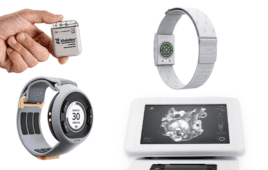Custom fit is the key when it comes to spinal implant rods, which an estimated 38,000 people need each year. This need is especially great for people who have a spinal deformity such as scoliosis, which causes the spine to twist and turn into complex and sometimes dangerous positions. In 2011, an estimated 1.6 million people received treatment for scoliosis according to the Bone and Joint Initiative, a consortium of professional medical societies.
Correcting this deformity involves moving a distorted spine into a different position, which is no simple task. To accomplish it, surgeons attach metal rods to the bones surrounding the spinal column in order to support and straighten the spine.
To perform this demanding procedure, surgeons previously needed to be as much a sculptor as a physician. Over the years, they have mastered the art of cutting, bending and twisting metal rods to fit each patient.
Often, however, this manipulation may create weak spots in the rod where it can break in the future. In addition, the manipulation of the rods traditionally has been done in the operating room during surgery, adding to the time a patient spends in surgery under anesthesia.
Now, however, advances in medical imaging and implant manufacturing are making it possible to tailor an implant to the patient receiving it.
Matthew Colman, MD, has begun using patient-specific rods in reconstructive surgery — giving patients with spinal deformities implants designed to fit their anatomy perfectly. An assistant professor of orthopedic surgery at Rush University Medical Center, Colman is one of few spinal surgeons in the world who also specializes in spine cancer treatment and was one of the first doctors in Chicago to use these patient specific rods.
The customization is done in advance of the operation in cooperation with an implant manufacturer. To create the rods, Colman uploads the patient’s calibrated X-rays to a computer. Then he uses a sophisticated software program to plan the reconstructive surgical procedure.
The software allows him to simulate deformity correction and other surgical maneuvers in order to map out and determine the exact length and shape of the rod. The specifications are sent to the manufacturer, and the finished rod is delivered to Rush.
Because so much of the planning is done before surgery, less time is needed during the operation itself. “When we reduce time operating room we help to decrease the chances for infection and blood loss during surgery — and we decrease potential mistakes with the measurements,” Colman says. “In addition, manipulating the rod by hand-bending them may cause them to break more easily, which is theoretically avoided with the custom manufacturing process.”
In addition to custom-made spinal rods, Colman has also been involved in the design of patient-specific 3D printed vertebral cages, which are used to provide anterior (frontal) support for spinal reconstructions when the area in front of the spine has been destroyed or removed due to infection, a tumor or trauma. The cages are in the process of receiving U.S. Food and Drug Administration approval for use in the United States.
“The future of implants is in customization,” Colman says. “New technology is streamlining the process, making surgery more efficient and effective by employing faster and better working methods.”




